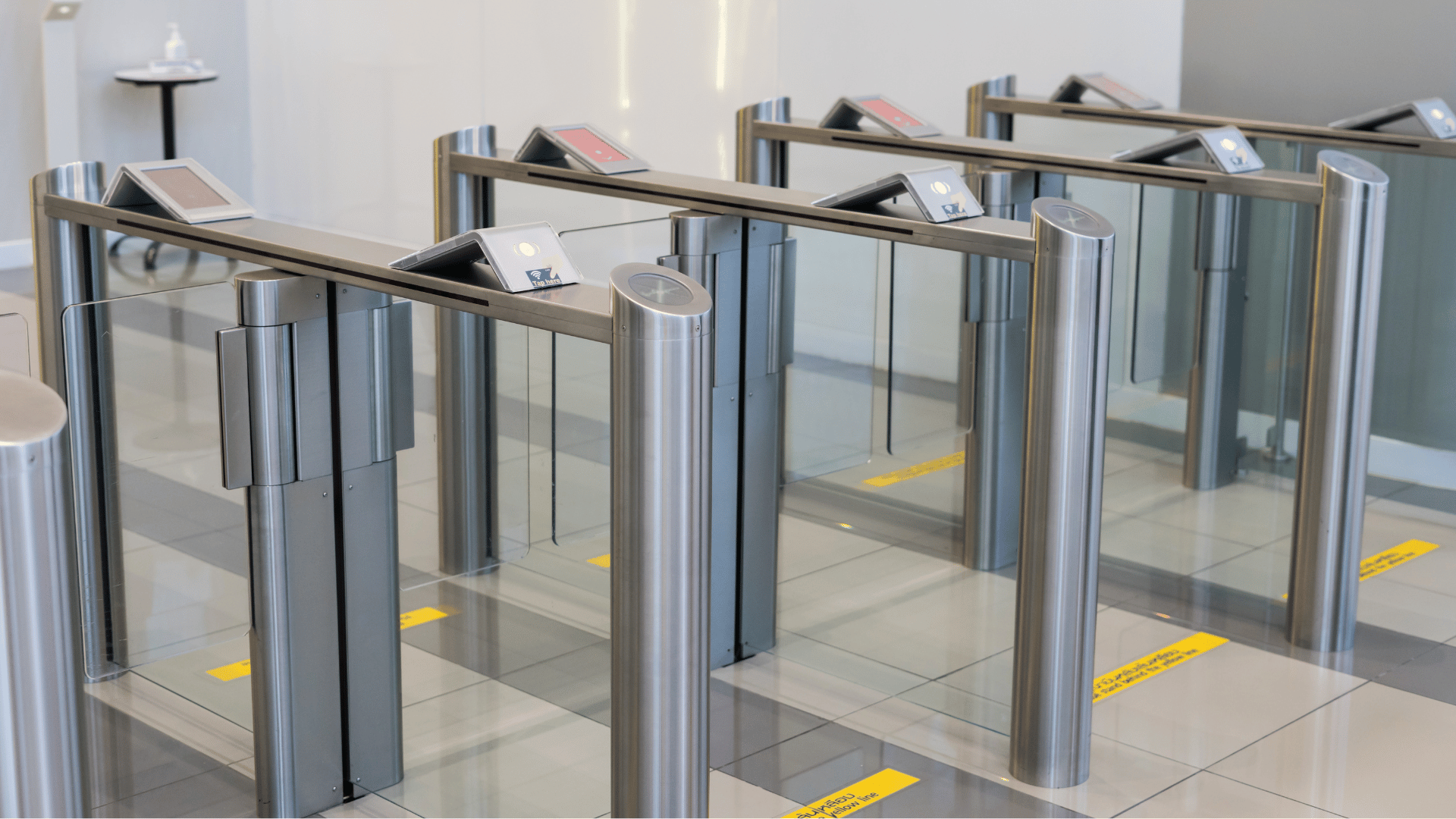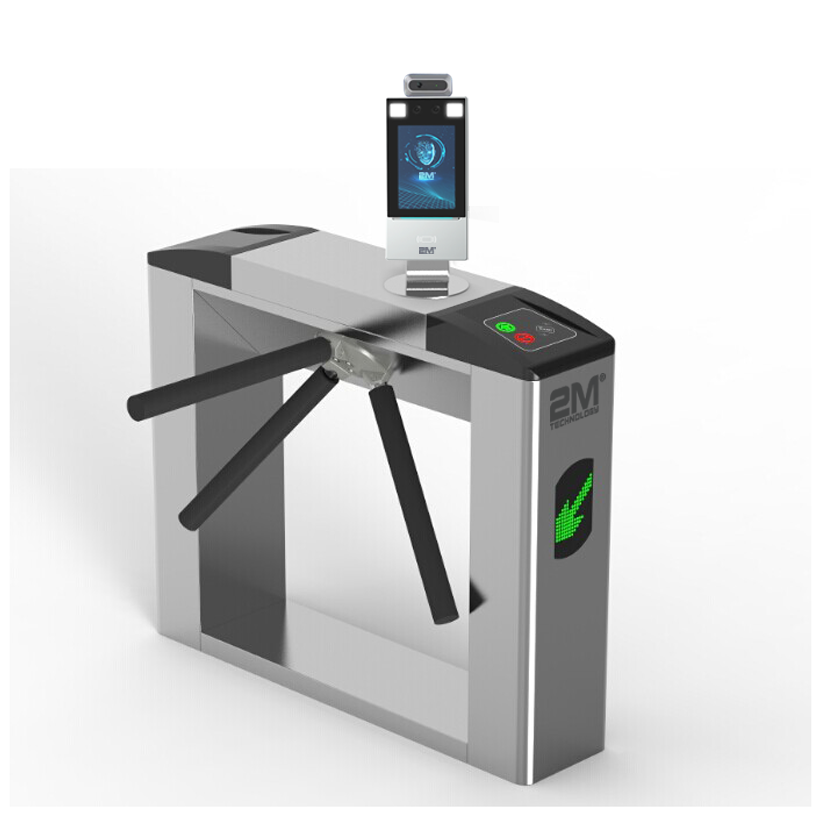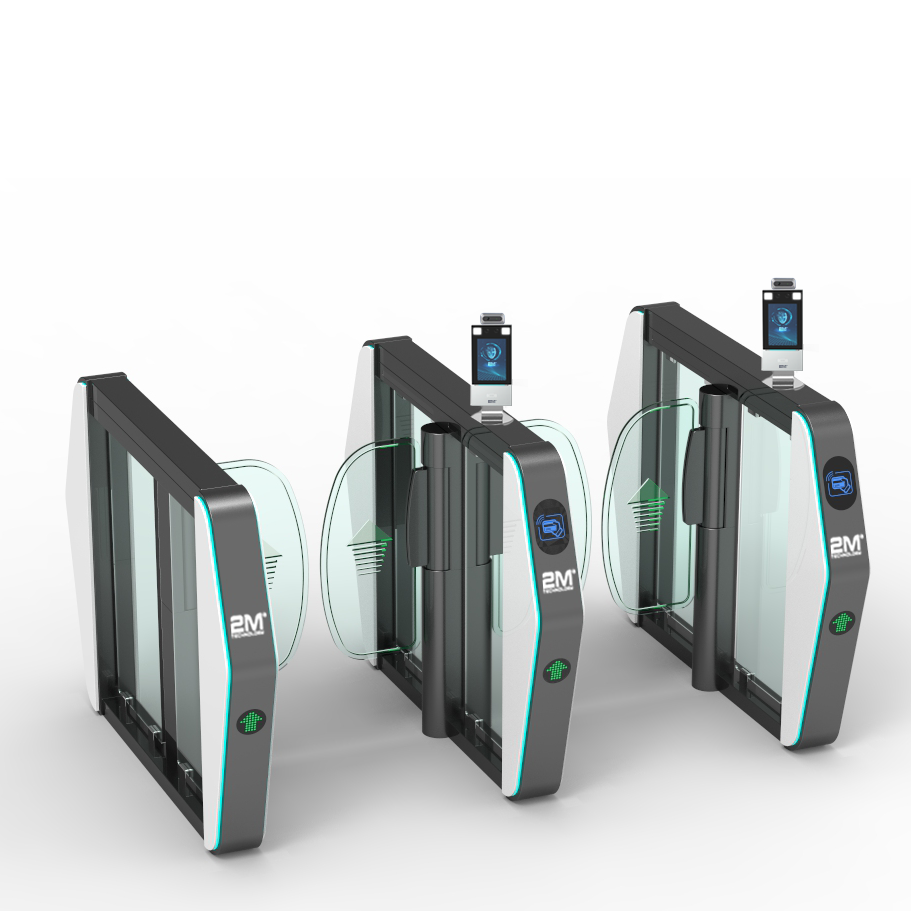Integrating turnstiles with an access control system is an effective way to improve a building’s physical security. These devices keep unauthorized individuals out while granting access to authorized personnel quickly and efficiently. But with so many different types of turnstiles available, how do you choose the best one for your business? Optical turnstiles are a popular option for high-traffic places, offering a balance of security, convenience, and aesthetic appeal.
Mechanical Turnstiles vs. Optical Turnstiles
An optical turnstile is a security device that restricts access to a building. Unlike mechanical turnstiles, which have physical barriers, optical turnstiles rely on infrared sensors to create an invisible barrier.
In mechanical turnstiles, physical barriers unlock or swing open when access is granted. After each person passes, the barrier resets to block the next person. If access is denied, the barrier stays locked.
Optical turnstiles don’t require physical barriers, but they can have them for extra security. Instead, their barriers are infrared beams between two cabinets. When access is granted, the invisible beams disconnect, and if the turnstile has physical barriers, they open to allow the person through. After passage, the beams reconnect, and the barriers reset. If someone is denied access but tries to walk through, the sensors trigger an alert.
Why Use Optical Turnstiles?
Optical and mechanical turnstiles serve the same purpose—to control who enters secure areas. However, optical turnstiles have more advantages when it comes to security, efficiency, and aesthetics.
Higher Rate of Passage
Mechanical turnstiles tend to have a slower throughput. This is because after each person passes, the next person must wait for the physical barriers to rotate back into place or swing shut before proceeding. In contrast, optical turnstiles operate at a faster pace. Instead of relying on a fixed time for closure, they use infrared sensors to track each person’s passage. The barriers and beams stay open while someone is in the lane and quickly close once they pass, ready for the next person almost immediately. This quick cycle of opening and closing is why optical turnstiles are often referred to as “speed gates.”
Prevents Tailgating
Compared to mechanical turnstiles, optical turnstiles are more effective at preventing tailgating. The infrared sensors can detect when each person has passed through the lane, causing the barriers to close immediately and the beams to reconnect. This instantaneous closure blocks the next person from entering, even if they’re following closely behind the first person. Mechanical turnstiles close on a fixed schedule, meaning the barriers might remain open after someone passes through. Tailgaters can take advantage of this delay and sneak through, gaining unauthorized access to the building.
Strengthens Physical Security
The presence of optical turnstiles deters unauthorized entry by creating a physical obstacle that trespassers must bypass, increasing the chances of them being caught. If an unauthorized attempt is made, the sensors trigger audible and visual alarms to alert security personnel. These automatic gates strengthen physical security by blocking unauthorized individuals from entering while speeding up the process for authorized personnel. Additionally, using optical turnstiles eliminates the need for a guard to constantly monitor entry, reducing workloads for security teams and improving efficiency.
Supports Facial Recognition for Access Control
Optical turnstiles can integrate with a range of access control devices, including card readers, keypads, RFID scanners, and more. However, the most secure method of access control is facial recognition. Facial recognition is a biometric method that verifies access by scanning an individual’s face. Unlike access cards, digital codes, or RFID tags, a face cannot be stolen or swapped between people. This makes it impossible for an unauthorized person to gain access by using an authorized person’s credentials.
Provides Touchless Entry with Facial Recognition
In addition to being more secure, optical turnstiles that use facial recognition for access control are also more hygienic. Individuals can gain access by simply walking up to the terminal and having their face scanned. No physical contact is required, reducing the risk of germ transmission. This touchless entry is not only safer but also more convenient. Authorized personnel can enter quickly without having to search for a badge or stop to enter a PIN code.
Improves Handicap Accessibility
Mechanical turnstiles can be challenging for individuals with mobility issues or those who use wheelchairs. Rotating barriers require users to push the arms while walking through, which may be difficult. Swing gate turnstiles open automatically, but they only stay open for a limited time. If someone is still passing through while the gate starts to close, they can get hit. Optical turnstiles are a more accessible solution for the handicapped. The gates automatically swing open or retract and remain open until the person has fully passed through. Additionally, the distance between the two cabinets can be widened to accommodate wheelchairs.
Aesthetically Pleasing
Mechanical turnstiles usually have metal bars or gates as barriers, which give them a bulky and less visually appealing appearance. Optical turnstiles do not require physical barriers since they use infrared sensors to create invisible ones. However, when they do incorporate physical barriers, they are typically made of tempered glass or acrylic. Their sleek and modern look makes them suitable for corporate lobbies or high-end buildings, where aesthetics are important. They blend seamlessly into various interior settings while maintaining security and functionality.
Get the Best Optical Turnstiles from 2M Technology
Optical turnstiles are a popular choice for access control because they provide more security without compromising efficiency or aesthetics. At 2M Technology, we offer a wide selection of optical turnstiles in a variety of styles, including glass swing gates, retractable turnstiles, and wing turnstiles. Each turnstile is compatible with our access control terminal, which features touchless entry, temperature scanning, and facial recognition. We also offer customizable options for barrier material, cabinet material, and motor type so you can get exactly what you need for your business. If you need an estimate or help choosing the best solution, contact our security experts at +1 (214) 988-4302 or sales@2mtechnology.net.



